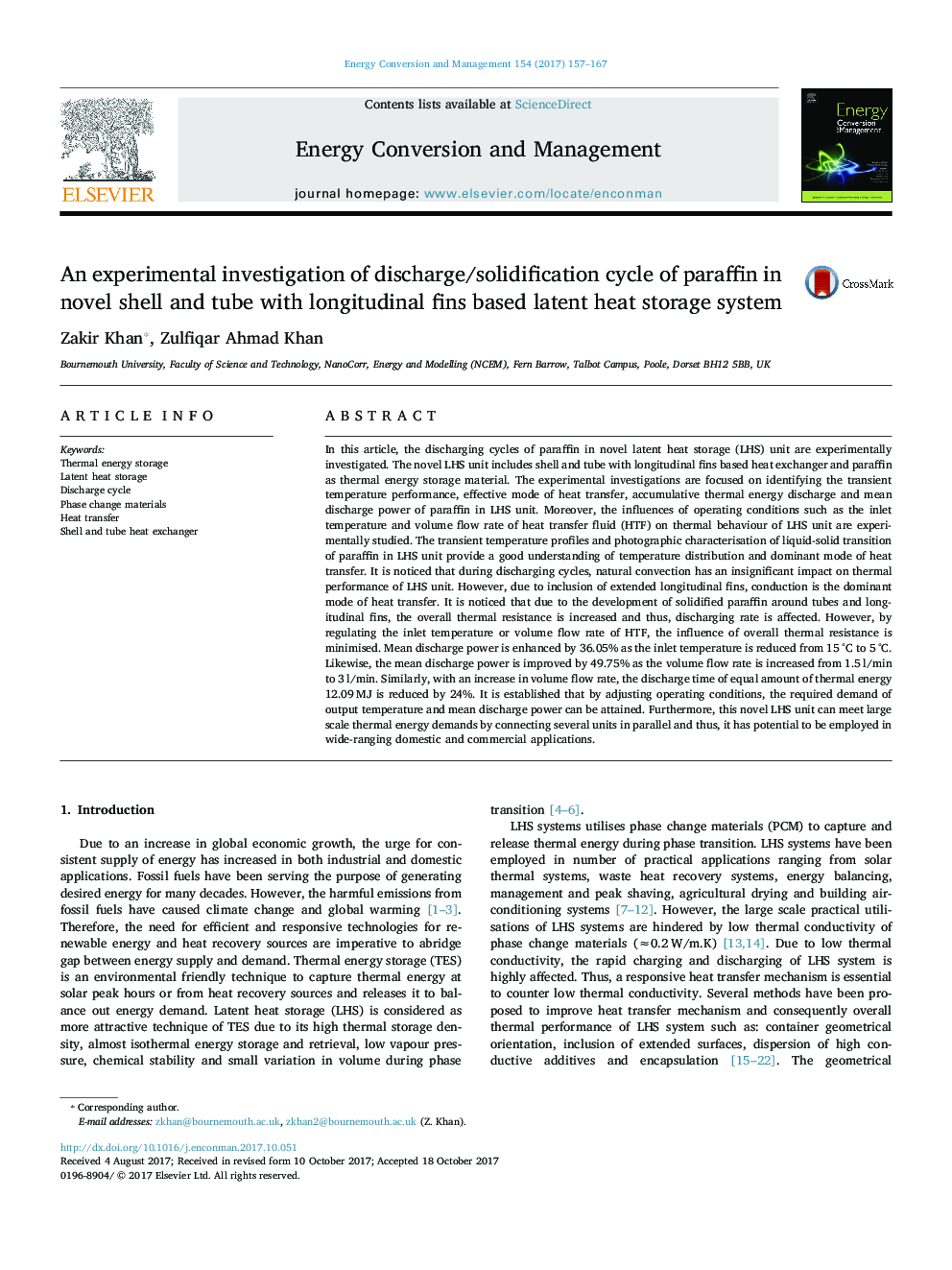| کد مقاله | کد نشریه | سال انتشار | مقاله انگلیسی | نسخه تمام متن |
|---|---|---|---|---|
| 7159727 | 1462808 | 2017 | 11 صفحه PDF | دانلود رایگان |
عنوان انگلیسی مقاله ISI
An experimental investigation of discharge/solidification cycle of paraffin in novel shell and tube with longitudinal fins based latent heat storage system
ترجمه فارسی عنوان
یک بررسی تجربی از چرخه تخلیه / انجماد پارافین در پوسته جدید و لوله با فانوس های طولی بر اساس سیستم ذخیره سازی پنهان نهفته
دانلود مقاله + سفارش ترجمه
دانلود مقاله ISI انگلیسی
رایگان برای ایرانیان
کلمات کلیدی
ذخیره انرژی حرارتی، ذخیره سازی گرمایی خنثی، چرخه تخلیه، مواد تغییر فاز، انتقال گرما، مبدل حرارتی شل و لوله،
موضوعات مرتبط
مهندسی و علوم پایه
مهندسی انرژی
انرژی (عمومی)
چکیده انگلیسی
In this article, the discharging cycles of paraffin in novel latent heat storage (LHS) unit are experimentally investigated. The novel LHS unit includes shell and tube with longitudinal fins based heat exchanger and paraffin as thermal energy storage material. The experimental investigations are focused on identifying the transient temperature performance, effective mode of heat transfer, accumulative thermal energy discharge and mean discharge power of paraffin in LHS unit. Moreover, the influences of operating conditions such as the inlet temperature and volume flow rate of heat transfer fluid (HTF) on thermal behaviour of LHS unit are experimentally studied. The transient temperature profiles and photographic characterisation of liquid-solid transition of paraffin in LHS unit provide a good understanding of temperature distribution and dominant mode of heat transfer. It is noticed that during discharging cycles, natural convection has an insignificant impact on thermal performance of LHS unit. However, due to inclusion of extended longitudinal fins, conduction is the dominant mode of heat transfer. It is noticed that due to the development of solidified paraffin around tubes and longitudinal fins, the overall thermal resistance is increased and thus, discharging rate is affected. However, by regulating the inlet temperature or volume flow rate of HTF, the influence of overall thermal resistance is minimised. Mean discharge power is enhanced by 36.05% as the inlet temperature is reduced from 15â¯Â°C to 5â¯Â°C. Likewise, the mean discharge power is improved by 49.75% as the volume flow rate is increased from 1.5â¯l/min to 3â¯l/min. Similarly, with an increase in volume flow rate, the discharge time of equal amount of thermal energy 12.09â¯MJ is reduced by 24%. It is established that by adjusting operating conditions, the required demand of output temperature and mean discharge power can be attained. Furthermore, this novel LHS unit can meet large scale thermal energy demands by connecting several units in parallel and thus, it has potential to be employed in wide-ranging domestic and commercial applications.
ناشر
Database: Elsevier - ScienceDirect (ساینس دایرکت)
Journal: Energy Conversion and Management - Volume 154, 15 December 2017, Pages 157-167
Journal: Energy Conversion and Management - Volume 154, 15 December 2017, Pages 157-167
نویسندگان
Zakir Khan, Zulfiqar Ahmad Khan,
